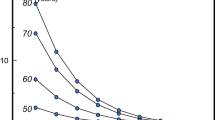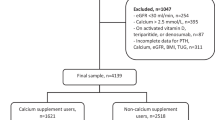Abstract
Bone metastasis from breast cancer can result in significant morbidity including hypercalcemia, fractures, spinal cord compression, and pain. Treatment modalities have included radiation therapy, surgery, analgesia, and bisphosphonates.
Clodronic acid, pamidronic acid, ibandronic acid, and zoledronic acid are the four bisphosphonates that have been investigated in metastatic breast cancer. Pamidronic acid, clodronic acid, and ibandronic acid, evaluated in this setting in randomized, double-blind, placebo-controlled trials, have all demonstrated significant improvements in delaying and treating skeletal events in breast cancer patients, including symptom improvement. Pamidronic acid and zoledronic acid appear to be equal with respect to efficacy and safety.
Based on several large randomized studies, pamidronate 90mg infused over 2 hours, or zoledronic acid 4mg over 15 minutes every 3–4 weeks is recommended in patients with breast cancer and radiographic evidence of bone destruction. The major toxicity associated with either bisphosphonate is renal impairment and, therefore, monitoring of serum creatinine levels prior to each administration of either agent is recommended. The adverse effects of this class of agents also include gastrointestinal symptoms.




Similar content being viewed by others
References
Coleman RE, Rubens RD. The clinical course of bone metastases from breast cancer. Br J Cancer 1987; 55: 61–6
Coleman RE. Skeletal complications of malignancy. Cancer 1997; 80: 1588–94
Coleman RE. Uses and abuses of bisphosphonates. Ann Oncol 2000; 11: 179–84
Chlebowski RT. Factors influencing the role of bisphosphonates in breast cancer management. Semin Oncol 2001; 28: 42–8
Boyce BF, Yoneda T, Guise TA. Factors regulating the growth of metastatic cancer in bone. Endocr Relat Cancer 1999; 6: 333–47
Pluijm G, Lowik C, Papapoulos S. Tumour progression and angiogenesis in bone metastasis from breast cancer: new approaches to an old problem. Cancer Treat Rev 2000; 26: 11–27
Flelsch H. Experimental basis for the use of bisphosphonates in Paget’s disease of bone. Clin Orthop 1987; 217: 72–8
Flelsch H. Bisphosphonates: history and experimental basis. Bone 1987; 8: S23–8
Smith MR. Bisphosphonates. Philadelphia (PA): Lippincott Williams and Wilkins, 2001: 700–706
Flelsch H. Bisphosphonates: mechanisms of action. Endocr Rev 1998; 19: 80–100
Singer FR, Minoofar PN. Bisphosphonates in the treatment of disorders of mineral metabolism. Adv Endocrinol Metab 1995; 6: 259–88
Body JJ. Bisphosphonates. Eur J Cancer 1998; 34: 263–9
Lowik CW, van der Pluijm G, van der Wee-Pals LJ, et al. Migration and phenotypic transformation of osteoclast precursors into mature osteoclasts: the effect of a bisphosphonate. J Bone Miner Res 1988; 3: 185–92
Hughes DE, MacDonald BR, Russcil RG, et al. Inhibition of osteoclast-like cell formation by bisphosphonates in long- term cultures of human bone marrow. J Clin Invest 1989; 83: 1930–5
Sato M, Grasser W, Endo N, et al. Bisphosphonate action. Alendronate localization in rat bone and effects on osteoclast ultrastructure. J Clin Invest 1991; 88: 2095–105
Zimolo Z, Wesolowski G, Rodan GA. Acid extrusion is induced by osteoclast attachment to bone: Inhibition by alendronate and calcitonin. J Clin Invest 1995; 96: 2277–83
Hughes DE, Wright KR, Uy HL, et al. Bisphosphonates promote apoptosis in murine osteoclasts in vitro and in vivo. J Bone Miner Res 1995; 10: 1478–87
Luckman SP, Hughes DE, Coxon FP, et al. Nitrogen-containing bisphosphonates inhibit the mevalonate pathway and prevent post-translational prenylation of GTP-binding protelns, including Ras. J Bone Miner Res 1998, 13: 581–9
Nishikawa M, Akatsu T, Katayama Y, et al. Bisphosphonates act on osteoblastic cells and inhibit osteoclast formation in mouse marrow cultures. Bone 1996; 18: 9–14
Sahni M, Guenther HL, Flelsch H, et al. Bisphosphonates act on rat bone resorption through the mediation of osteoblasts. J Clin Invest 1993; 91: 2004–11
Fromigue O, Lagneaux L, Body JJ. Bisphosphonates induce breast cancer cell death in vitro. J Bone Miner Res 2000; 15: 2211–21
van der Pluijm G, Vloedgraven H, van Beek E, et al. Bisphosphonates inhibit the adhesion of breast cancer cells to bone matrices in vitro. J Clin Invest 1996; 98: 698–705
Magnetto S, Boissier S, Delmas PD, et al. Additive antitumor activities of taxoids in combination with the bisphosphonate ibandronate against invasion and adhesion of human breast carcinoma cells to bone. Int J Cancer 1999; 83: 263–9
Jagdev SP, Coleman RE, Shipman CM, et al. The bisphosphonate, zoledronic acid, induces apoptosis of breast cancer cells: evidence for synergy with paclitaxel. Br J Cancer 2001; 84: 1126–34
Coleman RE, Rubens RD. Bone metastases and breast cancer. Cancer Treat Rev 1985; 12: 251–70
Hortobagyi GN, Theriault RL, Porter L, et al. Efficacy of pamidronate in reducing skeletal complications in patients with breast cancer and lytic bone metastases: Protocol 19 Aredia Breast Cancer Study Group. N Engl J Med 1996; 335: 1785–91
Theriault RL, Lipton A, Hortobagyi GN, et al. Pamidronate reduces skeletal morbidity in women with advanced breast cancer and lytic bone lesions: a randomized, placebo-controlled trial: Protocol 18 Aredia Breast Cancer Study Group. J Clin Oncol 1999; 17: 846–54
Hortobagyi GN, Theriault RL, Lipton A, et al. Long-term prevention of skeletal complications of metastatic breast cancer with pamidronate: Protocol 19 Aredia Breast Cancer Study Group. J Clin Oncol 1998; 16: 2038–44
Conte PF, Giannessi PG, Latrellle J, et al. Delayed progression of bone metastases with pamidronate therapy in breast cancer patients: a randomized, multicenter phase III trial. Ann Oncol 1994; 5: S41–4
Paterson AH, Powles TJ, Kanis JA, et al. Double-blind controlled trial of oral clodronate in patients with bone metastases from breast cancer. J Clin Oncol 1993; 11: 59–65
Kristensen B, Ejlertsen B, Groenvold M, et al. Oral clodronate in breast cancer patients with bone metastases: a randomized study. J Intern Med 1999; 246: 67–74
Ernst DS, Brasher P, Hagen N, et al. A randomized, controlled trial of intravenous clodronate in patients with metastatic bone disease and pain. J Pain Symptom Manage 1997; 13: 319–26
Diel IJ, Marschner N, Kindler M, et al. Continual oral versus intravenous therapy with bisphosphonates in patients with breast cancer and bone metastasis. Atlanta (GA): ASCO, 1999
Major P, Lortholary A, Hon J, et al. Zoledronic acid is superior to pamidronate in the treatment of hypercalcemia of malignancy: a pooled analysis of two randomized, controlled clinical trials. J Clin Oncol 2001; 19: 558–67
Berenson JR, Rosen LS, Howell A, et al. Zoledronic acid reduces skeletal-related events in patients with osteolytic metastases. Cancer 2001; 91: 1191–200
Rosen LS, Gordon D, Antonio BS, et al. Zoledronic acid versus pamidronate in the treatment of skeletal metastases in patients with breast cancer or osteolytic lesions of multiple myeloma: a phase III, double-blind, comparative trial. Cancer J 2001; 7: 377–87
Body JJ, Lichinitser M, Diehl I, et al. Double blinded placebo control trial of intravenous ibandronate in breast cancer metastatic to bone. Atlanta (GA): ASCO, 1999: 2222
Tripathy D, Lazarev A, Lichinister MR, et al. Oral ibandronate lowers the incidence of skeletal complications in breast cancer patients with bone metastasis. Orlando (FL): ASCO, 2002
Coleman RE, Purohit OP, Black C, et al. Double-blind, randomised, placebocontrolled dose-finding study of oral ibandronate in patients with metastatic bone disease. Ann Oncol 1999; 10: 311–6
Markowitz GS, Appel GB, Fine PL, et al. Collapsing focal segmental glomerulos-clerosis following treatment with high-dose pamidronate. J Am Soc Nephrol 2001; 12: 1164–72
Tyrrell CT, Bruning PF, May-Levin F, et al. Pamidronate infusions as single-agent therapy for bone metastases: a phase II trial in patients with breast cancer. Eur J Cancer 1995; 31A: 1976–80
Van Pozanak CH, Ben-Porat L, Panageas K, et al. Renal safety of 1 hour infusion rate of pamidronate in patients with metastatic breast cancer. Orlando (FL), 2002
Vilimovskij A, Thuerlimann JR, Berenson JR, et al. Renal safety and tolerability of 90mg of Aredia administered as an intravenous 1 hour infusion: preliminary results. Atlanta (GA): ASCO, 1999: 2223
Ali SM, Esteva FJ, Hortobagyi G, et al. Safety and efficacy of bisphosphonates beyond 24 months in cancer patients. J Clin Oncol 2001; 19: 3434–7
Hillner BE, Ingle JN, Berenson JR, et al. American Society of Clinical Oncology guideline on the role of bisphosphonates in breast cancer. American Society of Clinical Oncology Bisphosphonates Expert Panel. J Clin Oncol 2000; 18: 1378–91
Acknowledgment
The authors have provided no information on sources of funding or on conflicts of interest directly relevant to the content of this review.
Author information
Authors and Affiliations
Corresponding author
Rights and permissions
About this article
Cite this article
El-Rayes, B.F., LoRusso, P.M. The Role of Bisphosphonates in the Treatment of Skeletal Complications of Breast Cancer. Am J Cancer 3, 369–375 (2004). https://doi.org/10.2165/00024669-200403060-00004
Published:
Issue Date:
DOI: https://doi.org/10.2165/00024669-200403060-00004




